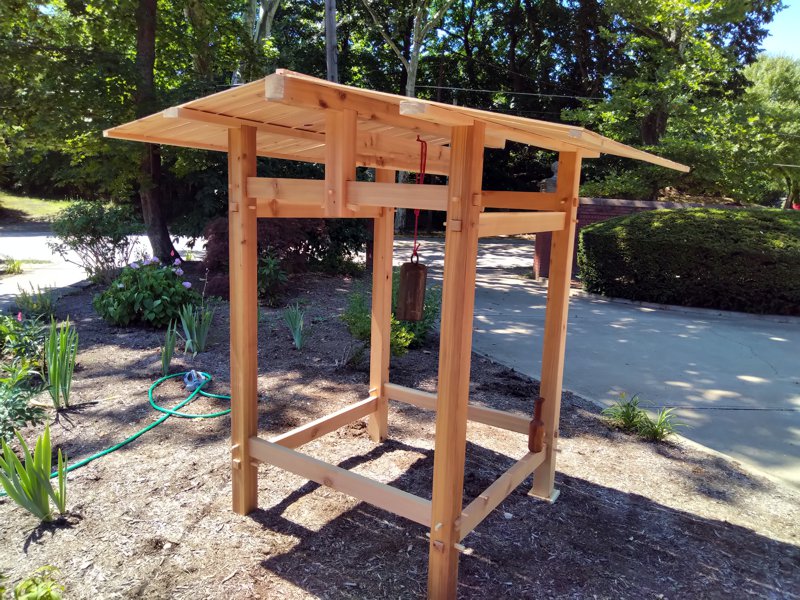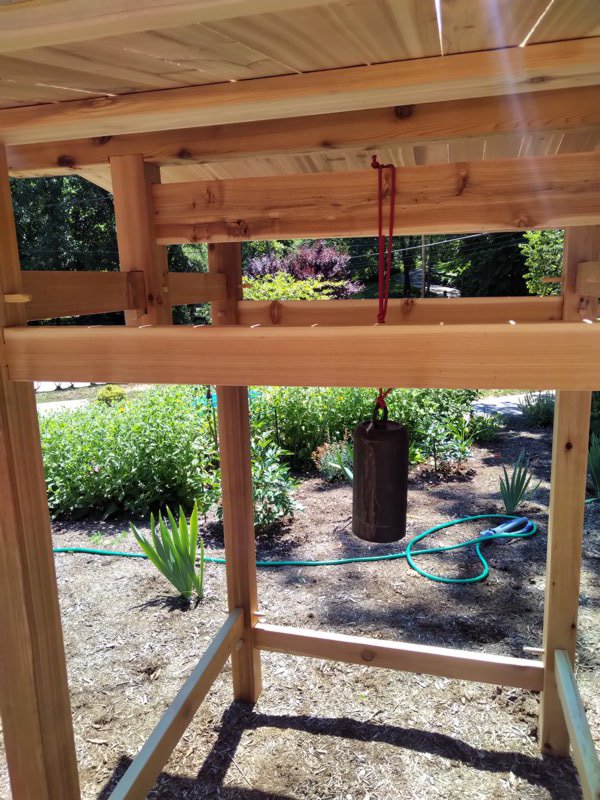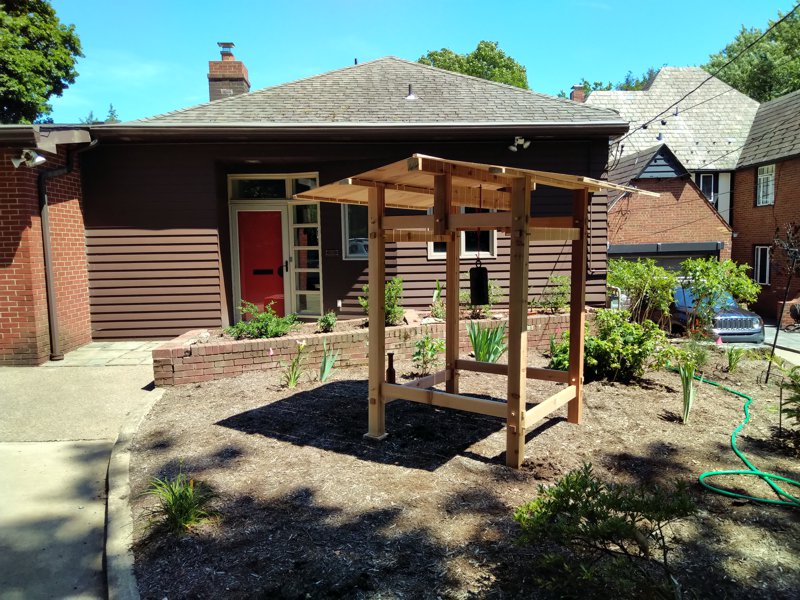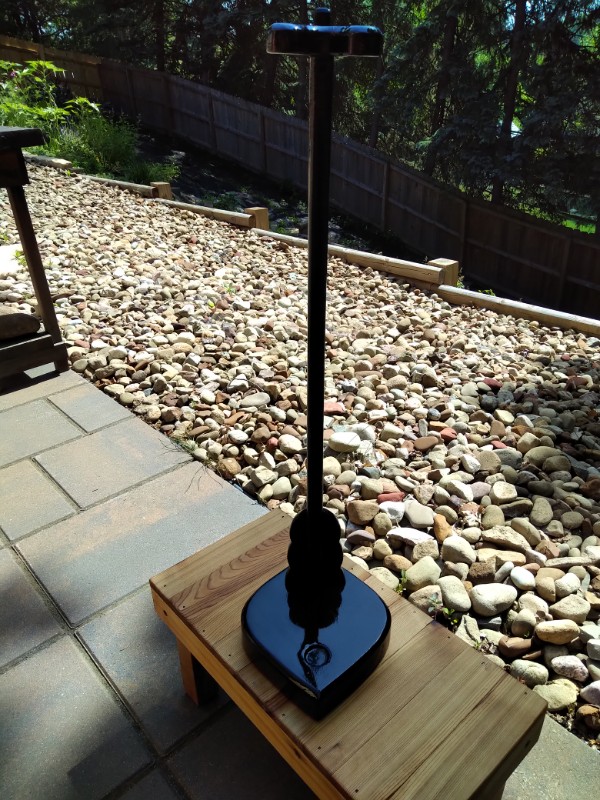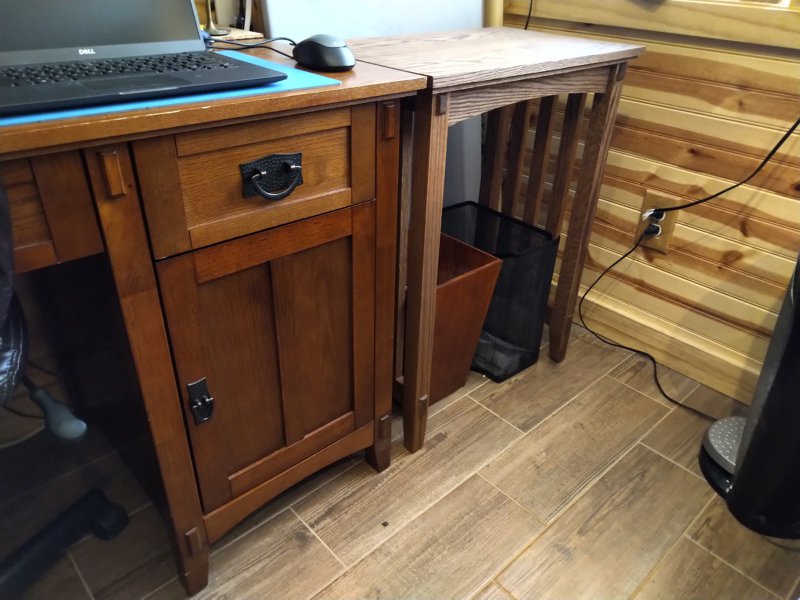Sharon bought this bell maybe ten years ago up at Pennsic. It was in the basement at the old house, then it was in the garage here at the new house. I have planned, for all this time, to build an enclosure in which to hang this bell, to give Sharon’s garden a Japanese accent piece. Well here it is.
This belfry, or shourou, is made entirely of cedar, except for the pegs and wedges, which are cypress. The vertical posts are 4-by-4. Cutting all those through-mortises in 4×4 was no picnic, let me tell you. The cross-braces are all 2-by-4. Cutting the large tenons and small securing mortises on those was fun by comparison. The roof is all quarter-inch by 4, which I made by re-sawing 1×4 on the band saw, and then planing it down to remove the saw marks. In spite of the power tools, this was ten 1x4s, and quite a bit of work.
The corner posts are six feet tall, so this is a human-scale project. There’s a ranma panel between the center roof supports that’s made from a single panel of 1-by-6. The bell hangs from this.You can see a cherry-wood mallet sitting on one of the lower cross beams, for striking the bell. The bell is made from a an old SCUBA tank. It has a pleasing sound.
I put about six days of work into this, if you don’t count the trip up to Mars Lumber to buy the cedar. I could pretty much only cut one of the vertical posts per day. I drilled out the mortise holes, the chiselled the corners out of the holes to make square mortises. To keep them square with the faces, I marked both ends of the mortises and went in from both sides to the center. This means that cutting the four large mortises and four small mortises was like cutting 16 mortises on every post. So, one per day. I would only re-saw a few of the 1x4s and cut a few 2x4s each day, too. Spreading out the work made for more variety each day, which was necessary given that I was working out in the garage in 90 degree heat.
When enough pieces were ready, I started assembling the structure. The tenons on the end of the 2x4s were pretty tight in the mortises, and the pegs to secure them had to be hammered in to tighten the joints. once I had the frame assembled, I set it up in the garden and cut the three roof beams. These have notches cut in them to hold them on the posts, and there are hidden construction screws to secure them. I could have gotten fancier with the joinery here, but I did not.
Once all the roof pieces were sawn, planed, and cut to length, it was time to make a roof. The roof pieces are all nailed in place with brads from a nail gun. Strips under the edges of the roof keep the ends of the pieces together, and a cap rail on top secures the top ends of the roof pieces. It’s not waterproof, but it does not need to be.
I’m really happy with the way this project came out. It’s big, but not too big, and very solid. The thin roof provides shade, but doesn’t make the structure too top-heavy. The bell looks great hanging there, and sounds terrific when you strike it. Lamost all of the project went according to plan, so if I need a similar structure someplace else, I know that I can make all the pieces and then construct it on-site with minimal fuss. My ultimate goal is to build a small Japanese-style house on a trailer for camping at Pennsic. This is a good step in that direction.

